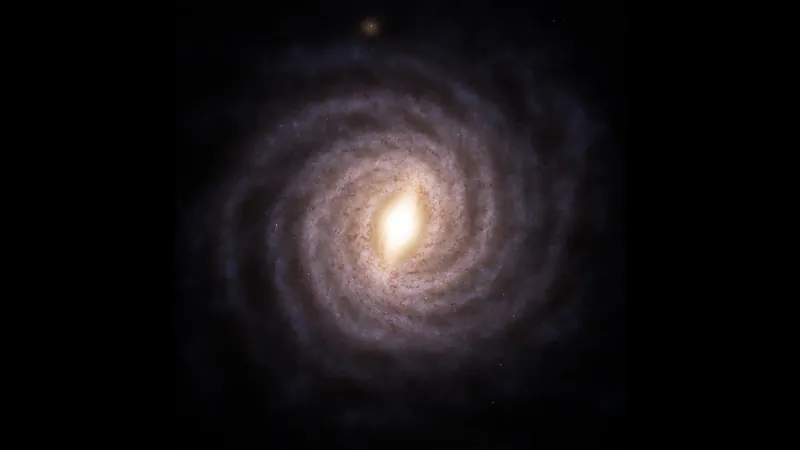
Unveiling the Mystery: Are 100 Ghost Galaxies Orbiting Our Milky Way?
2025-07-13
Author: Siti
In a groundbreaking discovery, cosmologists at Durham University in the UK are revealing a stunning possibility: our Milky Way may be surrounded by up to 100 hidden "orphan" galaxies that have eluded detection until now.
Using advanced supercomputer simulations and innovative mathematical modeling, researchers propose that these elusive satellite galaxies are not only missing but could hold the key to validating the Lambda Cold Dark Matter (LCDM) theory of the universe's formation.
Presented at the Royal Astronomical Society's National Astronomy Meeting, this research challenges our understanding of the cosmos. The LCDM model suggests that ordinary matter makes up just 5% of the universe, with 25% being dark matter and a whopping 70% composed of dark energy.
The Mystery of the Missing Satellites
Traditionally, the LCDM theory implies that the Milky Way should have many more companion galaxies than we can currently see. These missing satellites—often extremely faint—are thought to be stripped of their dark matter halos by the gravitational pull of our galaxy. As a result, they remain nearly invisible.
Dr. Isabel Santos-Santos, the lead researcher, emphasizes that current observational capabilities may not yet be powerful enough to spot these ghostly galaxies. However, cutting-edge telescopes, including the newly commissioned Rubin Observatory LSST camera, hold the promise of bringing them into focus.
The Potential Impact on Cosmic Understanding
Estimations reveal that the Milky Way has around 60 confirmed satellite galaxies, yet the latest models suggest there could be dozens more. Detecting these faint companions could substantially fortify the LCDM theory, enhancing our comprehension of how the universe evolved.
Current cosmological simulations fall short in resolution, making it difficult to capture the evolution of these faint dark matter halos, leading to what scientists call "orphaned" galaxies. The Durham team's combined simulations and models, particularly the high-resolution Aquarius simulation, aim to address these gaps.
Spotting the Tiny Candidates in Our Midnight Sky
The research also highlights around 30 newly identified tiny candidates that may represent these faint satellite galaxies. Whether they are dwarf galaxies or globular clusters remains an open question, but their very existence suggests a vibrant hidden population waiting to be uncovered.
Co-researcher Professor Carlos Frenk echoes the excitement, proclaiming that finding these faint satellites would not only support the LCDM model but also demonstrate the immense power of physics and mathematics in unraveling cosmic mysteries.
Looking Ahead: The Future of Galactic Discovery
With nearly 1,000 astronomers gathering for the National Astronomy Meeting at Durham University, the anticipation for breakthroughs in space research is palpable. As new technology brings the cosmos closer, we stand on the verge of potentially witnessing galaxies that were once lost to the depths of space, profoundly enriching our understanding of the universe's intricate tapestry.




 Brasil (PT)
Brasil (PT)
 Canada (EN)
Canada (EN)
 Chile (ES)
Chile (ES)
 Česko (CS)
Česko (CS)
 대한민국 (KO)
대한민국 (KO)
 España (ES)
España (ES)
 France (FR)
France (FR)
 Hong Kong (EN)
Hong Kong (EN)
 Italia (IT)
Italia (IT)
 日本 (JA)
日本 (JA)
 Magyarország (HU)
Magyarország (HU)
 Norge (NO)
Norge (NO)
 Polska (PL)
Polska (PL)
 Schweiz (DE)
Schweiz (DE)
 Singapore (EN)
Singapore (EN)
 Sverige (SV)
Sverige (SV)
 Suomi (FI)
Suomi (FI)
 Türkiye (TR)
Türkiye (TR)
 الإمارات العربية المتحدة (AR)
الإمارات العربية المتحدة (AR)